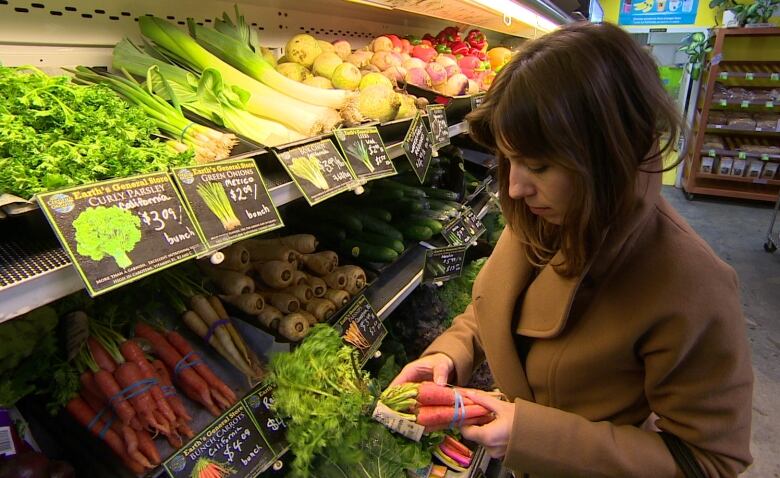Grocery price spike: 5 tips on getting more for your dollar
The average Canadian household's grocery bill is expected to rise by about $345 this year

Produce prices are higher than most British Columbians would like right now.
The dollar ishovering near a 13-year low in a country that imports around 80 per cent of its grown groceries, so you've probably alreadyfelt the pinch at the checkout counter.
With an eye on savings, CBC'sThe Early Editionspoke witha registered dieticianfor some tips on how you can keep both your cart and your wallet full.
1. Reduce waste
According to dietician Melissa Baker, the average Canadian household'sgrocery bill is expected to rise about $345 this year, but thatsame average household will alsowaste around $1,500 dollars worth of food.
Baker says the bill caneasily be lowered.
"Ifyou can control your food waste and do some better meal planning and maybe buy less at one time, you can actually save money this year and not spend more on your food budget. You just have to be a little bit more conscious of it."
2. Understand best-before dates
Best before dates are mandated on any food that's fresh for less than 90 days.

Baker says it's important to rely onyour best judgment, as thereare nohard and fast rules onfood quality.
"It doesn't have to do with safety, so just because the best before date has passed doesn't mean you can't eat it."
3. Prioritizenutrition
When food prices go up, you want your dollar to go as far as it can, so knowing the most nutritious options at a given price point can mean more value for the money. For example, both lettuce and kale currentlycost around $3 perbunch.
"Kale is a little bit more nutrient dense than the lettuce here, Looking at these higher food prices you really want to get the bang for your buck, so make sure you're choosing nutrient dense options."
4. Celebrate the 'Year of the Pulse'
2016 has been declared the Year of the Pulse' by the United Nations, which means it's time to break out the lentils, peas, and other similar legumes.

These foods are easily made into convenient dipsandare staying relatively inexpensive when compared to their pricier counterparts, like avocado.
"Beans, lentils, chick peas, legumes, all really great economical options, especially if you can learn how to cook them from scratch. That's going to save you a lot of money," saidBaker.
"If you love avocado, just make it last. You can do things like add peas to guacamole to make it stretch."
5. Stick to staple fruits, and use your freezer
"Some of those staple fruitslike apples, oranges,bananas are going to be a little bit cheaper, especially apples because they are in season for a lot longer than the other fruits like berries and thingslike that."
Baker also recommends buying frozen fruits and vegetables, which tend to be cheaper than fresh, imported produce that's out-of-season locally. Frozen food also gives you the option of eatingmore locallyyear-round.
Baker suggests freezing local produce, such as berries, when in season.
With files from Margaret Gallagher












_(720p).jpg)


 OFFICIAL HD MUSIC VIDEO.jpg)
.jpg)



























































































